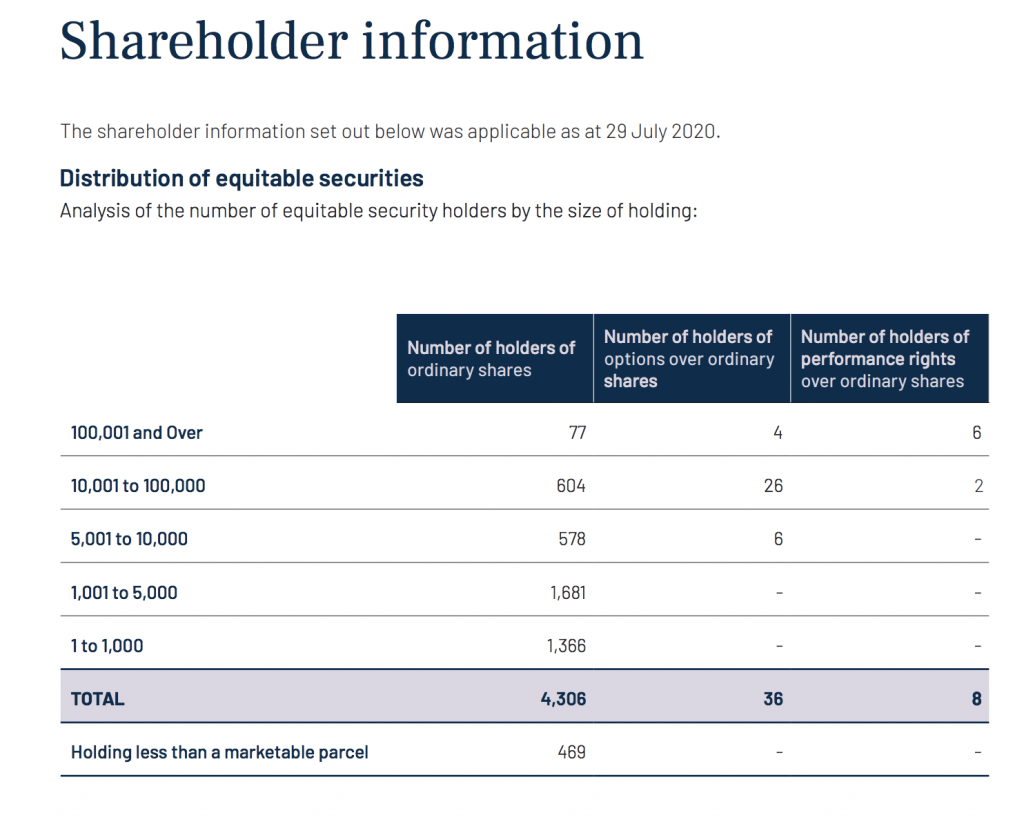One of the problems faced by retail investors is that we often receive share purchase plan (SPP) offers that say that we can apply for (for example) $1,000, $2,000, $5,000, $10,000, $15,000 or $30,000.
In the case of many companies, they will only allocate a small number of shares to the SPP. For example, Fineos has allocated $5 million to its share purchase plan at $4.26. If shareholders apply for the full $30k, are they likely to get the shares, or will their money simply sit in a bank account until most of it is returned to them?
First of all, it’s worth noting that we can’t know for certain what will happen, given almost everything is up to the company’s discretion.
The first step is to guess at how many retail shareholders will receive the offer. Usually, the starting point will be the most recent annual report. There you can find the distribution of securities. The screenshot below is an example from Class Limited (ASX: CL1).

However, that’s not available with Fineos, since it has been listed less than a full year. Therefore, we’ll have to fall-back on guessing based on trading patterns and its length of time as a listed company. I’d guess there would be about 2,000 retail shareholders eligible for the SPP.
The second step is to figure out how many of the eligible shareholders might apply, and how much they will apply for. As a general rule of thumb the biggest influence on this is how big the discount is to the prevailing share price. A 15% discount is usually enough to trigger substantial participation.
In the case of Fineos, we might decide that 1,500 shareholders will apply and the average application will be $10,000. In that scenario, we would estimate that the company will receive $15m worth of applications, three times the $5m offered. That means the company will have to either scale back applications, increase the offer size, or do both.
Now, different companies will scale-back SPPs in different ways. Sometimes, they’ll give you a hint about how they will do it in the SPP documentation. There sure can be some strange ones. I remember RPM Global gave consideration to whether you sold any of your holding after the SPP date. And if memory serves me correctly, Nanosonics once did one based on “first come, first served” whereby the speed of your application determined your success. In the past I’ve seen companies scale back relative to application size (advantaging those who applied for more) and the most common strategy tends to be to scale back based on pro-rata holdings.
However, another common policy is to allow shareholders at least the minimum parcel $500 worth, or the minimum application $1000 worth, so even if you think an SPP will be scaled back severely, it usually makes sense to apply for at least the minimum. In any event, it is worth reading the SPP documentation, for any hints. Importantly, most companies leave the door open to expanding the SPP some, so don’t take it for granted that the announced size of the offer is the final outcome.
In a general sense, I usually find that it makes sense to apply for at least the minimum for an attractively prices SPP. Usually, if I like the offer, I’ll apply for something just slightly above what I think will be allocated to me, based on the offer size, and the likely applications. If I apply for something too far above my own likely allocation, then it just means I have cash stuck in transit, waiting for a refund.